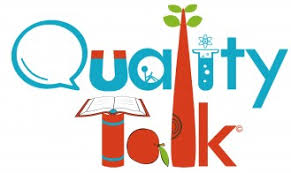What makes great teaching?
What makes great Teaching at Highfield?
These are some fo the principles of what makes great teaching at Highfield.
 Positive Relationships
Positive Relationships
Creating an inclusive environment is the most important thing a school can do. An inclusive culture is a prerequisite for an effective school: it brings happiness, a feeling of safety and being part of the community, and, of course, it impacts positively on learning, both in the classroom and beyond. It is our job to prepare pupils to flourish and feel truly included in society. Pupil behaviour has multiple influences, some of which teachers can manage directly. Understanding a pupil’s context will inform effective responses to misbehaviour. Every pupil should have a supportive relationship with a member of school staff.
(Pedagogical) content knowledge

The most effective teachers have deep knowledge of the subjects they teach, and when teachers’ knowledge falls below a certain level it is a significant impediment to students’ learning. As well as a strong understanding of the material being taught, teachers must also understand the ways students think about the content, be able to evaluate the thinking behind students’ own methods, and identify students’ common misconceptions. Effective pedagogies build on pupils’ prior learning and experience.

High quality Questions
Being clear about the purpose of questions can help you frame questions more carefully. However, it is important to remember that there are lots of different and valid reasons why teachers use questioning. It helps to:

- focus on a topic and draw out learners’ knowledge;
- ignite curiosity and engage learners more;
- guide thinking and learning;
- deepen thinking and extend learning;
- stretch and challenge all learners;
- systematically assess learning and check understanding;
- inform teaching, helping teachers to adapt content to meet learners’ needs;
- identify and respond to gaps and misconceptions in knowledge and understanding;
- scaffold understanding to support learners towards their goals;
- make links and connections across topics and subjects so that learning can be transferred; and
- encourage learners to reflect and to identify the next steps to move learning forward.
Effective questioning is a fundamental part of successful learning and progress and plays a crucial role in every classroom.
Quality of instruction
Includes elements such as effective questioning and use of assessment by teachers. Specific practices, like reviewing previous learning, providing model responses for students, giving adequate time for practice to embed skills securely Executive Summary 3 and progressively introducing new learning (scaffolding) are also elements of high-quality instruction.
|
Say Show See Go |
Begin a lesson with a short review of previous learning
• Present new material in small steps, with student practice after each step
• Ask a large number of questions and check the responses of all students (not hands up)
• Provide models for problem solving and worked examples
• Guide student practice and rehearsal
• Check for student understanding
• Obtain a high success rate (80%+)
• Provide scaffolds for difficult tasks
• Require and monitor independent practice
• Engage students in weekly and monthly review

Retrieval Practice
Retrieval practice boosts learning by pulling information out of students’ heads, rather than cramming information into students’ heads. Just like students practice an instrument, they need to practice their knowledge, too. https://www.youtube.com/watch?v=OUl0mMVbkAc&t=6s
- Retrieval practice helps students “use it or lose it,” just like practicing a language or an instrument
- With retrieval practice, struggling is a good thing for learning (what scientists call a “desirable difficulty”)
- Retrieval practice improves students’ understanding of their own learning process (what scientists call “metacognition”)

Use of modern technology

Not too long ago, the only place students would be allowed to use technology in schools was during Information Technology (IT) lessons.

Today, education and technology go hand-in-hand. The latest innovations in educational tech allow us to reshape traditional teaching methods, create a more inclusive learning environment, and reach more students.
 Effective AFL
Effective AFL
One way of thinking about AFL is that it aims to ‘close the gap’ between a learner’s current situation and where they want to be in their learning and achievement. Skilled teachers plan tasks which help learners to do this.
AFL involves students becoming more active in their learning and starting to ‘think like a teacher’. They think more actively about where they are now, where they are going and how to get there.
Effective teachers integrate AFL in their lessons as a natural part of what they do, choosing how much or how little to use the method. AFL can be adapted to suit the age and ability of the learners involved.
AFL strategies are directly linked to improvements in student performance in summative tests and examinations. Research shows that these strategies particularly help low-achieving students to enhance their learning.
Traditionally, AFL has been closely associated with formative assessment because practices such as questioning and providing feedback help ‘form’ or ‘shape’ student learning. This differs from summative assessment which typically is an attempt to measure student attainment at the end of a period of learning.

Adaptive Teaching
Adaptive teaching is an approach a teacher will use to continually assess the strengths and needs of learners and adapt their teaching accordingly to ensure all learners can meet expectations.
https://educationendowmentfoundation.org.uk/news/moving-from-differentiation-to-adaptive-teaching

Quality talk
Developing learners who think critically, reason together and have the vocabulary to express their knowledge and understanding.
Through a high quality oracy education students learn through talk and to talk. This is when they develop and deepen their subject knowledge and understanding through talk in the classroom, which has been planned, designed, modelled, scaffolded and structured to enable them to learn the skills needed to talk effectively.

Classroom management
A teacher’s abilities to make efficient use of lesson time, to coordinate classroom resources and space, and to manage students’ behaviour with clear rules that are consistently enforced, are all relevant to maximising the learning that can take place. These environmental factors are necessary for good learning rather than its direct components.
Professional behaviours
Behaviours exhibited by teachers such as reflecting on and developing professional practice, participation in professional development, supporting colleagues, and liaising and communicating with parents.
